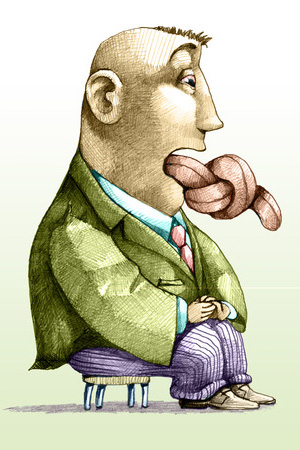Dyslexia is a common disorder, experienced by around 10% of the population. Those who suffer from it can feel stupid, leading in turn to anger, frustration and sometimes violence or crime (unsurprisingly, a disproportionately high number of prison inmates are dyslexic). So identifying the problem, and understanding that it has nothing to do with low intelligence, is vital.
 But what is dyslexia? The word has its origins in Greek, where ‘dys’ means ‘difficulty’ and ‘lexis’ means words. Experts disagree on many points, but all accept that in essence it means people struggle to read and spell fluently. The causes are unclear, though neuroscientists have identified certain parts of the brain that may be involved. It cannot be overstressed that dyslexia has nothing to do with intelligence: many great authors have been dyslexic, including Jules Verne, Agatha Christie and William Golding.
But what is dyslexia? The word has its origins in Greek, where ‘dys’ means ‘difficulty’ and ‘lexis’ means words. Experts disagree on many points, but all accept that in essence it means people struggle to read and spell fluently. The causes are unclear, though neuroscientists have identified certain parts of the brain that may be involved. It cannot be overstressed that dyslexia has nothing to do with intelligence: many great authors have been dyslexic, including Jules Verne, Agatha Christie and William Golding.
The following are classic signs:
1) A remarkable gulf between an individual’s general intelligence and their literacy skills. In other words, they may be articulate, quick-witted, good with numbers, and able to solve problems, yet will struggle to read and write.
2) Dyslexics often originate from families with a history of learning problems. Perhaps their father or mother never learnt to read properly yet went on to enjoy a demanding, highly-paid career.
3) The most obvious sign is difficulty with spelling. But, unlike someone with a sub-normal IQ, the dyslexic will jumble the letters into the wrong order. When they spell, the correct letters are chosen, but not arranged in the right way: ‘dose’ instead of ‘does’, ‘siad’ instead of ‘said’ and ‘bule’ instead of ‘blue’.
4) Problems learning to read. Someone who was not diagnosed until adulthood will often remember frustrated teachers who considered them intelligent and were bewildered as to why they found reading so difficult. Some older people tell horror stories of beatings at the hands of teachers convinced they were ‘doing it on purpose’.
5) Confusion between left and right. This is another classic sign and one often put down to ‘stupidity’.
6) Writing letters or numbers backwards (the confusion between ‘b’ and ‘d’ for example).
7) Difficulty with personal organisation. Dyslexic children often have messy bags, or find it difficult to get organised for a lesson. Once again, this will often be put down to bad behavior.
8) Difficulty following 2 to 3 step instructions. For example, someone may be exasperated by their husband’s failure to do the things requested. Perhaps his partner asked him to buy some milk, then get the car washed and then post a letter. Dyslexics sometimes find this sort of information impossible to remember and follow through.
9) Poor hand to eye coordination. This is not always the case, but many dyslexic people struggle to catch and throw well.
10) Trouble writing. Dyslexic children often grip their pen in a strange way and develop a handwriting style that is eccentric, inconsistent or incomprehensible.
The signs of dyslexia vary between individuals. Some will exhibit all of these signs, others just a few. The severity also varies. However, once you are diagnosed you can explore the various options (voice recognition software, for example). It is never too late to get help and improve your literacy skills.
